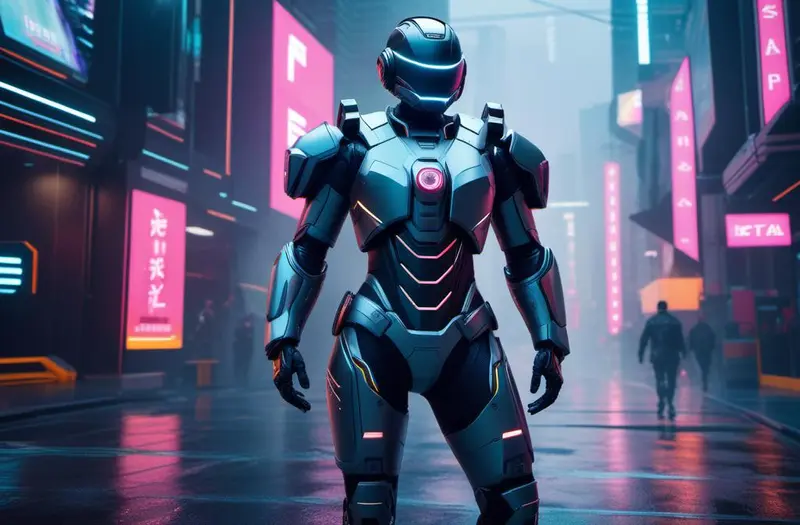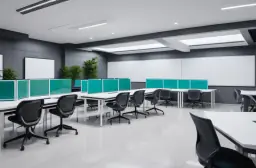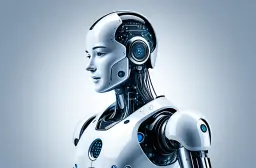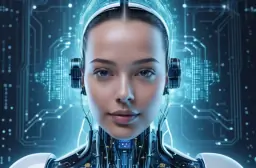Image Generation Trend with ChatGPT: A Complete Guide

Table of Contents
Imagine being able to create product illustrations, digital art, and even visual content for marketing campaigns with just a text instruction. No advanced design skills needed—just a basic understanding and creativity. This not only simplifies our work as content creators, marketers, and entrepreneurs, but also opens up new opportunities in SEO strategy and visual marketing.
But how exactly does the image generation process work? Are the results on par with professional designs? In this article, we’ll break down how to create images with ChatGPT, the best tips, innovative strategies, and the challenges you might face. Follow this complete guide to understand why the image generation trend with ChatGPT is unmissable this year!
Why is Image Generation Using ChatGPT Trending?
One of the main reasons the method of generating images via ChatGPT is booming is its efficiency. No more relying on complex software like Photoshop or spending hours to create a single illustration.
Combining text-to-image technology with ChatGPT’s interface offers an instant, user-friendly solution. By simply typing a detailed image description, we can produce visuals that closely match our expectations—or even exceed them!
Another driving factor is the integration of APIs and third-party tools like DALL·E and Midjourney, enabling direct collaboration with ChatGPT. This speeds up visual production while maintaining high quality.
How to Create Images with ChatGPT: The Basics
To get started with generating images using ChatGPT, you need to understand that this feature relies on AI model integration such as DALL·E 3, which can convert text into visuals.
Basic steps include:
- Opening the ChatGPT (Plus) platform connected to DALL·E.
- Typing a detailed image description, for example: “An illustration of a child flying a kite at sunset with an orange sky background.”
- The system will generate several visual options to choose from.
The image quality depends heavily on how detailed your prompt is. Hence, understanding prompt structure is key in the guide to creating images with ChatGPT AI.
Effective Prompt Structure: Techniques for Image Creation with ChatGPT
In a ChatGPT AI image generation tutorial, the prompt’s quality greatly impacts the final output. Here’s an ideal prompt structure:
- Main subject: What do you want illustrated?
- Additional details: Colours, visual style, atmosphere, background.
- Artistic style: Realistic, cartoon, minimalist, surreal, etc.
- Resolution: Specify size or aspect ratio if needed.
Example of a strong prompt:
“A portrait of an Indonesian farmer wearing a traditional hat in a green rice field during morning light, in realistic style with natural lighting.”
With techniques like these, AI image creation with ChatGPT becomes more precise and visually appealing.
Tool Comparison: ChatGPT vs Midjourney vs DALL·E

| Feature | ChatGPT + DALL·E | Midjourney | Canva AI Image Tool |
|---|---|---|---|
| Accessibility | High (direct in ChatGPT) | Medium (via Discord) | High |
| Image Quality | High | Very High | Medium |
| Prompt Personalisation | High | High | Low |
| Rendering Speed | Fast | Fast-Medium | Fast |
| Technical Requirements | Low | Medium | Very Low |
In conclusion, image creation via ChatGPT is ideal for beginners and professionals needing quick, hassle-free visuals.
Tips for Generating Images with ChatGPT Effectively
To achieve optimal results, follow these strategies for generating images with ChatGPT:
- Use visual adjectives: bright, blurry, symmetrical, etc.
- Add cultural context if needed (e.g., batik, wayang, local cuisine).
- Try multiple prompt variations to explore styles.
Consistency and experimentation are key. The more we use it, the more accurate and stunning the results.
Case Study: Local Business Using ChatGPT for Product Visuals
A local brand called Rasa Nusantara used ChatGPT to create aesthetic food menu illustrations for their social media.
In one week:
- Engagement increased by 34%.
- Design process time reduced by 70%.
- Visual content production costs dropped by 60%.
This shows how image generation strategies with ChatGPT can impact small businesses positively.
Challenges in Using ChatGPT for Image Generation
Despite advanced technology, there are still challenges such as:
- Imperfect facial details.
- Occasionally unrealistic body proportions.
- Images not eligible for commercial use without explicit licensing.
To overcome them:
- Always review images before publishing.
- Use additional editing tools if needed.
- Verify usage rights via the platform’s official documentation.
Practical Guide to Creating Images Using ChatGPT
The following simple steps serve as your daily guide:
- Define the image objective.
- Build a prompt using the effective structure.
- Use ChatGPT (Plus) with DALL·E access.
- Review and select the best result.
- Adjust colours, saturation, or composition if needed.
With this guide, practical image creation using ChatGPT becomes accessible to anyone.
Innovation in Image Generation with ChatGPT in Education

In education, teachers are using AI-generated images for:
- Illustrating science or history lessons.
- Interactive storybooks.
- Enriching digital learning materials.
This not only enhances the visual appeal of resources but also improves retention and student engagement.
Recommended AI Image Tools to Support ChatGPT
Besides ChatGPT, consider these complementary tools:
- Canva (AI Image Generator)
- Fotor AI
- NightCafe Creator
- Craiyon (formerly DALL·E mini)
Combining multiple tools can result in more diverse and unique AI image creations with ChatGPT.
Visual SEO Trends: Why AI Images Matter to Google
In SEO, images are more than decorative.
- Google evaluates visual-content relevance.
- Alt-text of AI images can be keyword-optimised.
- Bounce rate decreases with engaging visuals.
Thus, innovation in AI image generation with ChatGPT is not just aesthetic—it’s a long-term SEO strategy.
Prompt Composition Techniques Based on Target Audience
If targeting a younger audience:
- Use cartoon or pop art styles.
- Include bright colours and emotional expressions.
If targeting professionals:
- Use realistic, minimalist styles and elegant descriptions.
These techniques make image creation with ChatGPT more audience-specific and effective.
Strategy to Integrate AI Images into Website Content
Strategic steps to boost engagement and ranking:
- Add an image every 300 words.
- Optimise file size for faster loading.
- Use keywords in file names and alt-text.
This strategy brings content to life and boosts SEO competitiveness.
Ethical and Legal Guidelines in Using AI-Generated Images
Don’t ignore legal aspects:
- Ensure copyright or usage rights are clearly defined on the platform.
- Avoid using public figures’ likenesses without consent.
- Add disclaimers like “image generated by AI” when needed.
Following these keeps your digital reputation intact and prevents future legal issues.
The Future of ChatGPT as an AI Image Generator
This technology is evolving towards:
- Interactive, clickable visuals.
- Short video generation from text prompts.
- AI collaboration for visual and narrative composition.
We are witnessing the beginning of a deep, automated visual content revolution.
FAQs
Can I generate images in the free version of ChatGPT?
Not yet. This feature is available for ChatGPT Plus users with DALL·E 3 access.
How do I create realistic human faces?
Use detailed descriptions of expressions, lighting, and facial proportions. Apply the realistic style in your prompt.
Can ChatGPT images be used commercially?
Yes, but confirm usage rights from each platform. Some images are for personal use only.
Can ChatGPT generate product images?
Absolutely! It’s perfect for product mockups, catalogue visuals, and social media posts.
How to fix inaccurate AI images?
Refine your prompt, use additional editors, or combine with other AI tools.
Conclusion
Creating images with ChatGPT is no longer a trend—it’s a necessity in the fast-paced digital world. With the right approach—from crafting effective prompts to integrating visuals into content—we can harness this technology for both personal and professional use.
Text-based visualisation opens doors to creative efficiency, visual marketing, and limitless idea exploration. Let’s embrace this innovation to produce visuals that not only impress but also enhance our overall digital performance.
Key Takeaways
- The image generation trend with ChatGPT simplifies high-quality visual creation.
- Detailed prompts lead to more accurate and relevant images.
- Tools like DALL·E, Midjourney, and Canva can be combined for optimal results.
- AI images boost SEO performance and content engagement.
- Ethical and legal considerations are crucial for long-term usage.
Popular Tags
ADS SPACE HERE


